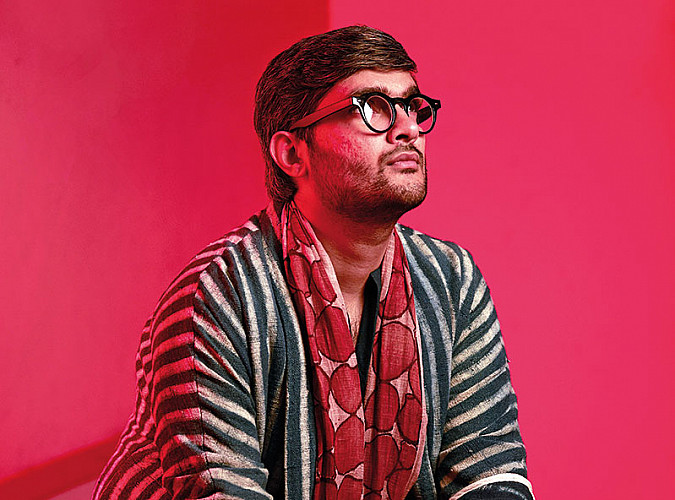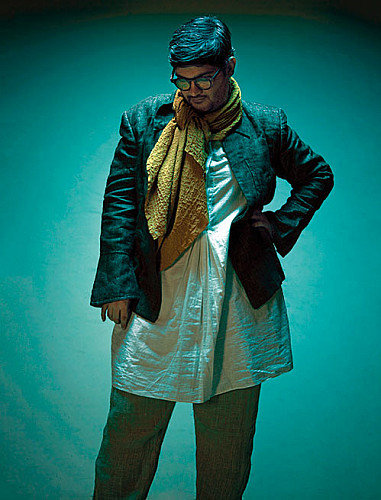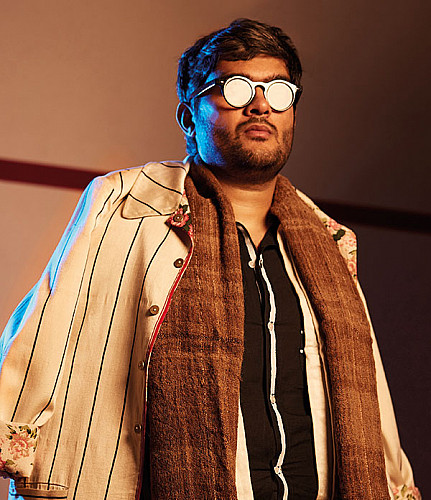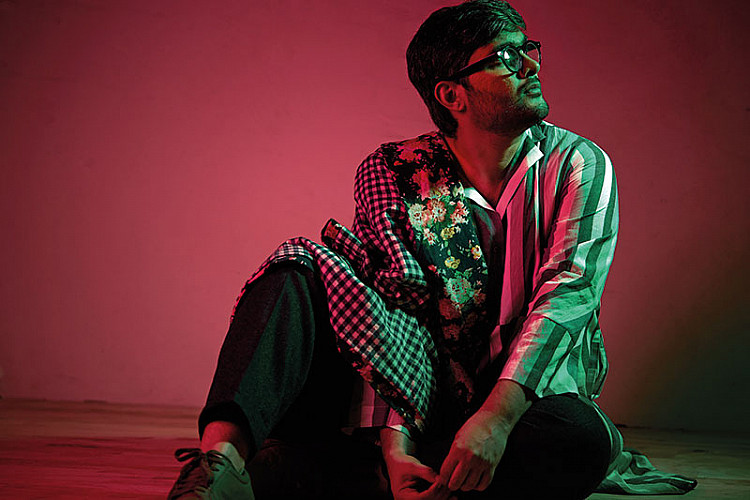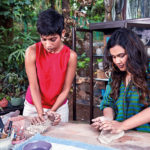Wearing His Art On His Sleeve: A Tête-À-Tête With Abhinit Khanna
With the advent and proliferation of social media, the world of visual and fine arts is at a crossroads. Various questions about the role, curation and experience of art lead to its constant redefinition. Closer to home, Mumbai-based creative arts manager and consultant Abhinit Khanna is building a bridge between the spheres of art and technology one audacious meme at a time.
The 30-year-old Rochester Institute of Technology graduate has worked as a production assistant with some of the country’s biggest names and galleries in art and design — including Jitish Kallat and Rajeev Sethi (he worked with the latter on Mumbai’s Chhatrapati Shivaji International Airport’s public art displays) — and has been privy to the field’s good, bad and ugly.
The term meme was originally coined in 1976 by biologist Richard Dawkins to describe how an idea spreads from person-to-person in a culture by random means of imitation. However, over time, the internet has appropriated it for any form of conceptual media (usually humorous in nature) consisting of culturally relevant visuals and text which get repeatedly passed on over the platform.
After stumbling upon them on another Instagram page, Khanna began to use vintage pictures of Bollywood stars from the ’80s and ’90s — now almost comical thanks to their dated outfits and melodramatic expressions — adding cheeky captions that take wry digs at the art ‘scene.’ And as memes are wont to do, these spread quickly among his digital network via his Facebook and Instagram (@abhinit_khanna) profiles.
I personally related to one of Khanna’s memes when I attended one of Mumbai’s Thursday Art Nights — when galleries in South Mumbai stay open beyond their usual hours. While trays of bubbly were making the rounds, an image of the late Sridevi, seductively holding a wine bottle and a dazzling Rekha, carrying one the size of a mini-missile circulated virtually. The caption read ‘Gallerists be like — are you coming?’ With the hashtag #WaitingForArtLovers. I enjoyed his satirical depiction of Mumbai’s art connoisseurs, who were shown as being easily baited with liquor for an evening of inebriated hobnobbing rather than an appreciation of the arts.
Khanna’s sharp-witted use of this viral form of communication is innovative and accessible, and the fact the he does not hide behind a fake identity lends credibility to his message. There are many instances when he examines the dynamics between the artists, gallerists, buyers, and dealers, and calls out “the handful of those in power” to help make the art world more democratic.
He’s received a lot of appreciation from his audience. He says, “People would respond to the memes on Instagram and those shared via Insta Stories immediately and in the process I learnt about many artists, even from across the border. A meme initiates a dialogue, as people are emotionally impacted by it. And because it is shared, it tends to start so many more conversations. That’s really the whole idea behind a meme; multiplicity and relatability. My art allows me to peel off layers from my mind and self-introspect a great deal.”
But simultaneously, his initial fear of facing backlash for calling out the art world — much like Diet Sabya, an Instagram account that exposes fashion copycats does — in certain ways has also come true. “Very recently, I discovered that I was being blocked by prominent gallerists and curators. And that might be because it’s uncommon to be able to critique art in India so openly.” Khanna’s work doesn’t only deal with art but also focusses on social issues: “When #MeToo gained traction as a movement, I posted an Insta Story saying, ‘Is it the right time to release a list of sexual predators in the art world?’, since there are so many of them, but we can’t point fingers because they’re so powerful.”
When asked about how his art practice has influenced his own style, he says, “People make fashion out to be frivolous. It is anything but. Fashion and style are as political as perhaps poetry or art itself. I make a selection based on what I am being influenced by in current moments. For example, I wear a scarf from Runaway Bicycle because I support Preeti Verma’s keen focus on making one’s own textiles and working against the grain to sustain that kind of clothing culture. I also wear a shirt I got made in Sri Lanka, by the women who work with batik prints because I believe in sustainable and ethical practices of making clothes and would like to be aware of who made my mine. Having said that, I love getting clothes made from the darzi (local tailor), because of their Zen approach while sitting in the hustle and bustle of a market in Andheri. It is as inspiring to me as the carefully thought-out, studio-based contemporary practice of Lovebirds.”
He adds, “Certain painters may draw attention to colour schemes that may not forecast trends, but they help one gather ideas from what is around. For example, the design of artist Vidha Saumya’s Purdah series (2007) is comprised of a beautiful melange of black, red and pink. It may be a regular colour combination, but my choices are influenced by the presence of her work in my room. It can even be a project like 256 Million Colours of Violence (2016) by artist Ali Akbar Mehta that makes me aware of what politics I am unconsciously a part of. My art inspires me to be a little unusual, but also stay relatable.”
With the objective to promote India’s craftspersons, Khanna would, at one point, wear shawls as the only accessory, because he felt this was his way of “branding himself” in the art sphere. He recounts incidents during the early editions of the music festival NH7, when he would wear long white chikan kurtas with a shawl, as if he were just walking out of a gallery. He comments, “I choose to wear clothes which automatically tell people which industry I work for.” At the same time, he believes that “just because one’s an artist doesn’t mean that one has to be literal or ethnic in one’s style. What’s important is being authentic and knowledgeable about what one chooses to wear”. Why Khanna is so entrenched in the idea of crafts revival is because “these are what our roots are. This is why I have a deep love for the villages of India. It’s important to know the geography of one’s fashion; where it’s being made and who’s making it”.
Similarly, Khanna had once taken British students — as part of a British Council arts project — to Delhi’s famed Toilet Museum. Towards its end, as a token of appreciation, Khanna was surprised to be given a beautiful golden khadi silk scarf. “I wore it extensively for the next four or five years. People would always ask me where I got it from,” he reminisces.
Not only are fashion and style a part of Khanna’s personal life but, as he says, “They can be empowering and lead to an exploration into one’s own art practices”. The significance of colour is alike in both of these worlds, as he clarifies, “I would prefer to not wear saffron as a colour, because it would automatically align me with an ideology to which I don’t agree and wouldn’t want to represent.”
His style is “clean silhouettes with minimalistic patterns”. He points out, “I prefer well-tailored kurtas in fluid fabrics, which help me move around easily while I am working. Even non-binary clothing — which is as abstract as art — is something I tend to favour, because it evokes esotericism.”
It is likely that the eccentric fashions you see in Khanna’s memes have rubbed off a little on him. And hopefully, his work will continue to strike a chord with the art community. He reminds me, “One has to keep in mind that despite a high humour quotient and low-art connotation, memes are anything but non-serious. I am not cut off from the social and political reality.”
Related posts from Verve:
Verve Trending
Sorry. No data so far.
us on Facebook to stay updated with the latest trends

